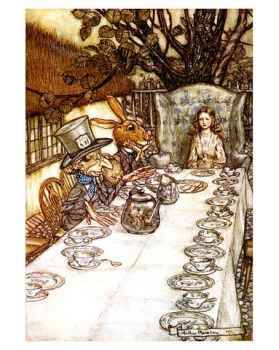The story begin in 1989. The third Garcia daugther, Yolanda, has returned to the family compound on the Island--the Dominican Republic. Yolanda hasn't been back in five years, an eternity in this close-knit family of aunts, uncles, and cousins. Yolanda hasn't told her family yet, but she's thinking of staying permanently this time, not returning to her family.
There are four Garcia girls and they left the Island with their Mami and Papi in the 1960's because of Papi's political activity. In the Dominican Republic, they lived surrounded by servants and family, but also constrained by social conventions. Their lives in the U.S. were harder: mastering a new language, new social expectations, new customs. The girls are sent "home" every summer so they do not forget who they are. They manage to evade the watchful eyes of Mami, Papi, and the Tias, and learn to become Americans. But assimilation comes with a price.
Sofia (Fifi) is the youngest and adapts the easiest, but is alienated from her Papi. Carla, the oldest, is a psychologist but has been married, divorced, and now remarried. Yolanda (YoYo or "Joe") was married, divorced, is a poet and a professor, but is having an affair with a married colleague. Sandi was the artist, but a traumatic experience back home has stifled her creativity. Now her connection to reality is tenuous.
The story moves backwards in time, beginning in 1989 and ending in 1956. And the story moves among the viewpoints of the sisters as well as the third person. Reading this book is sort of like watching a movie backwards. We don't fully understand the actions of the girls or of their parents until later. And it can be kind of confusing trying to remember whose story we're reading.
In fact, Carla's story gets short shrift, as do the college years of most of the girls, especially their early years at an all-women's college. Mami and Papi are presented mostly through the eyes of the girls, although Mami does get a few short chapters.
All in all, the book left me frustrated. I wanted to know more. Why and how did the girls fall away from the Church? How did Mami cope with losing the support of her family, her status? What happened with Carla's first marriage? Besides Sofia's children, did the other girls have any?
I thought this was going to be a story about the Americanization of these four young women, but I found that the author, Julia Alvarez, seemed to take shortcuts, stating the girls became American without showing how. Why was YoYo considering returning to the Domenican Republic to live? Did she feel more secure? Was she trying to recapture something from her past? Was she looking for a sense of belonging?
I did enjoy the interaction of the sisters: the jealousies, the closeness. I felt those scenes were faithfully captured, based on my experiences with my sisters and from what I've seen with my cousins and friends.
One of the reasons I read is to live another life, another's experiences, at least vicariously. I guess what I was looking for was a sense of experiencing the lives of the Garcia girls, at least vicariously. I never got that sense with this book, and I was very disappointed. The stories were interesting, but not particularly engaging.
The girls come of age during the 1960's and 1970's, so there is plenty of sex, casual and otherwise. There's some drug use, mostly marijuana. The girls have much to hide from their parents, especially when they are in college, which involves some elaborate schemes and lying. Except for Sofia, the girls do not seem particularly happy with their lot in life, with the choices they made. Their relationship with each other seems strong, their parents do love them, and there is much strength in their extended family, if only they could see it.
On the March Hare scale: 2 out of 5 Golden Bookmarks.
crossposted on Catholic Media Review
Sunday, January 20, 2008
Book Review: How the Garcia Girls Lost Their Accents
Posted by
March Hare
at
8:04 PM
![]()
Labels: Book Reviews
Subscribe to:
Comment Feed (RSS)




|